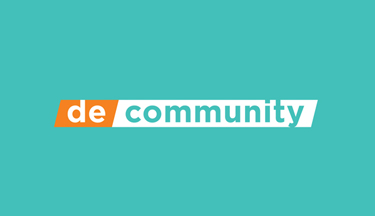Relational work in overlapping steps
Ethnographic Monitoring (Hymes 1980, Blommaert & Van der Aa 2015) addresses two issues important in the relationship between research and practice. I refer to these as the relational problem, “What must be considered in establishing the most fruitful kind of relationship between researchers and practitioners” and the communication problem, “What must be considered in creating a vehicle that facilitates the use of research in the improvement of educational practice.”
Two sets of potentially important sets of findings emerge. First, while the literature suggests a great deal of concern to establish a trustful relationship between researchers, educational practitioners and individual learners will yield rich data to the researcher, little thought appears to be given to establishing relationships that provide aid-to-reflection for the practitioner. By neglecting this, researchers are not only failing to make use of a potentially fruitful data source, the teacher’s and learner’s own thinking about her perceptions and understanding of school processes, but fail to seize an occasion to see direct application of their findings to practice.
Second, although most researchers are concerned to have their findings used by school practitioners, they frequently conceive of the task as that of delivering consumable products to users. Most literature on innovation and program implementation appears to implicitly accept the inevitability of this neoliberal model. Even the recent attempts to develop the notion of “mutual adaption” as a model for successful innovation, is at basis concerned with the problems inherent in incorporating information from outside sources into an existing process.
Scant attention has been paid to models of cooperative research in which the researcher is one and the same with the user and even less to the crucial issue of respect for the practitioner and the individual learner as they are. This latter concern does not mean that the practitioner in this co-operative relationship will not change, indeed the approach suggested here might be one of the most natural means available to foster important and basic changes is not an a priori condition to successful understanding and incorporation of research findings, and hence does not become an insurmountable psychological barrier to establishing productive relationships.
It is within the overlapping steps of Ethnographic Monitoring that this relational work takes place:
- The observer’s position (Consulting)
1-2: establishing relationships
- The other’s position (Participating)
2-3: solidifying relationships
- The collaborative position (Sharing)
3-4: long-term relationships
- Evaluation of Effect- (Taking Stock)
My experience with Ethnographic Monitoring not only suggests the feasibility of an approach to research based on a truly cooperative mode, one that builds on the implicit skills and knowledge practitioners need for the routine discharge of their profession, but one that holds great promise for addressing particularly thorny, longstanding issues of the research-practice relationship.
Danger in ethnographic proximity: Method and peril
There is a particular danger open to researchers involved in anthropological research in social work and educational settings. Ethnography of a school is not the same as ethnography of a distant culture. The reasons for being in the school include a desire to bring about beneficial change in education and to study these changes. In my Barbadian fieldwork (see Van der Aa 2012 and Blommaert & Van der Aa 2015) I often felt the need to step outside the researcher role and intervene to help a child or offer a suggestion to the teacher. I found it impossible to only an observer, and am still not completely sure whether this tendency biased the research of added new depths of insight. Perhaps a bit of both. My relationships with teachers evolved in different patterns, ending both on the personality of the teacher and the classroom situation.
This cordial relationship, however, had a certain very basic mistrust that teachers had toward researchers. I was still the observer and the representative of the university, and this placed me in the position of being a potential critic as well. For example, I worked with one teacher for the first year of the project in a very friendly relationship that included my offering to share my field notes, seeking feedback from her, asking for her perceptions and corrections to my observations, and constantly reasserting my own goodwill and desire to be helpful. At the end of that year, after the teacher read my report on the project, she said with some surprise and delight, “Well, there really is nothing negative in here.” Despite my constant assurances that my goal was not to criticize the teacher, it was odd when I handed her a document that demonstrated I had not been in the role of critic, that she was reassured.
We began the second year in a more genuine collaboration, but unfortunately the teacher was transferred from the school and the relationship was broken. I found myself with a new teacher, who, while again cordial and helpful, could not afford me the same trust I had earned from the first.
My relationship with a second teacher proceeded in quite a different manner. I had demonstrated my willingness to participate in the classroom, my ability to get along with the children, and my understanding of her quite unorthodox methods, I felt a strong bond of both collaboration and even friendship. This teacher read all my field notes, arguing with me on certain points, supplying additional information, refraining her own viewpoints and helping to shape mine. Perhaps the strongest proof of the bond of collaboration was that we were able to quite openly disagree over observations and their meaning.
The sharing of field notes with teachers was a point of some controversy within the project, some participants arguing that this would damage the objectivity of the research and hinder the notetaking. I found that knowing that teachers, in certain cases, would see my notes forced me to be highly descriptive and objective in my observations, helped to establish trust with the teacher, and opened an unequalled avenue of collaboration and feedback. This worked both ways, sometimes sharing notes and sometimes not (only reporting to teachers and checking points with them). By far I found the former method, while more difficult and time consuming, to be also more productive.
The project itself and the relations established with the school led to certain outcomes that were unforeseen at the start. For one, I taught a course in the Spring of 2007 entitled “Classroom Discourse and Interaction” at the University of the West Indies (Cave Hill, Barbados) in which students were required to do a semester of ethnographic research in a classroom. As part of this course, two of the students were permitted into the school as observers, one in a fourth grade and one in a sixth grade with a teacher who had participated in the project the preceding year. Claire, the observer in the sixth grade classroom, became a genuine participant observer in that class, helping the teacher to set up a writing program and establishing a relationship that was of benefit to both. This teacher, whose methods were often quite different from the rest of the school, later confided to me that she believed that Claire’s and my presence and interest in her class and her techniques helped to legitimize her in the eyes of the school and “reassured” colleagues that her teaching style had value.
Accidental relationships
Claire’s work in that classroom became a supplement to my own, providing me with valuable information on writing–a kind of ‘free bonus” to the project. Relationships established in the community also had certain unforeseen effects. As a visitor to Sunday School classes, I soon found-myself asked questions about how to handle reading problems, how to avoid embarrassing poor readers, etc. In some ways I was perceived as a very welcome liaison between church and school, a link that had not been established previously.
While I was not free to pursue this link, the realization of the importance of such potential ties was an important spinoff of the project. The same held true of tutoring centers, the public library, and scout troops. Adults involved in these activities seemed to welcome a contact with the public schools and desired to support the efforts of the teachers. The researcher, then, should be seen not only as an obse:ver, but as a catalyst. This role is unavoidable and as such should be capitalized on as one of the strengths of ethnographic research. As relationships arise and effects manifest themselves, they become part of the ongoing research, rather than impediments to the smooth progression of the work. The ethnographer simply accepts what happens and incorporates it as valuable data. I think it is of equal importance to focus not only on the anticipated outcomes of the study, but to treat as findings the process of, building, relationships and accomplishing the research.

















